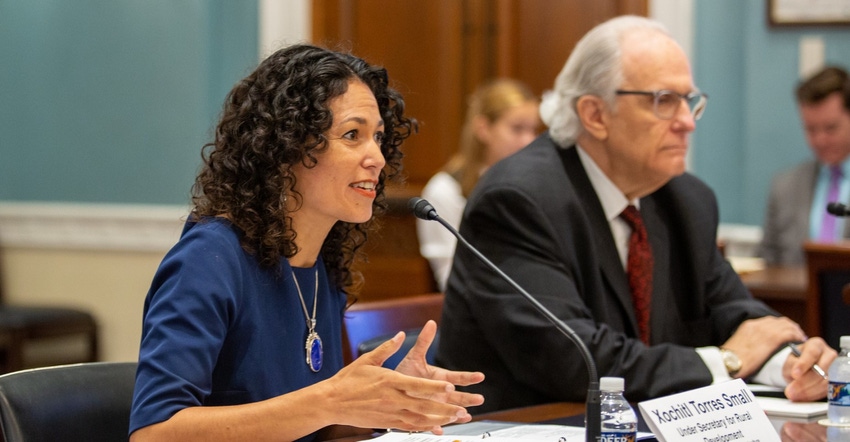
The pandemic reinforced how many areas across the country, particularly in rural America, do not have adequate access to high-speed internet. As the development of the 2023 Farm Bill nears, House Agriculture Committee Chairman David Scott, D-Ga., outlined at the start of a farm bill oversight hearing review of broadband that the committee must better understand how USDA, National Telecommunications and Information Administration, and the Federal Communications Commission work together to deploy additional resources for expanding rural broadband access.
The bipartisan Infrastructure Investment and Jobs Act made the largest Federal broadband investment in history, totaling nearly $65 billion for broadband programs at FCC, NTIA, and USDA, the primary agencies that administer existing broadband deployment grant programs.
“We must understand how these agencies plan to communicate and collaborate to effectively reach our shared goal of 100% nationwide coverage, which is why we established procedures for interagency coordination among USDA, NTIA, and FCC in the 2018 Farm Bill,” explains Scott.
USDA Undersecretary for Rural Development Xochitl Torres Small explains USDA Rural Development is proud to serve as a critical coordinator for federal expansion efforts for high-speed internet, including investments through the bipartisan infrastructure law. She says USDA, FCC and NTIA and the Treasury work on a bi-weekly basis and sometimes even more regularly.
“Now, you know as well as I do, we can't lay fiber overnight and the federal government can be a slow train,” she told legislators. “And let's be honest, sharing with one another across government silos hasn't been a strength historically.”
Torres Small explains the regular interagency meetings allow those involved to “establish a regular cadence of communication and to lean into those sticky challenges.”
The $65 billion, which includes a staggering $42 billion for broadband infrastructure, in resources is allocated under the bipartisan infrastructure bill. Torres Small notes this is a huge investment that also requires the different agencies to coordinate efforts as all four have access to some of the same money for broadband expansion. Torres Small also says there are interagency agreements in terms of coordination.
Chris McLean, acting administrator for USDA Rural Utilities Service, adds, “The tradition of working across agency boundaries and working with state regulatory agencies is something that’s very familiar to the Rural Utilities Service.”
Torres Small says USDA’s local offices provide a rarity in the federal government. She says that’s why USDA’s been asked to lead things such as the Rural Partners Network because “that takes real connection with community so that we can listen to them and learn from them. And that’s why we’re a fundamental part of the solution when it comes to high-speed internet because each situation is different,” she explains.
In recent years, a lot of attention has been focused on the discrepancies between maps from different agencies. Torres Small says there are some differences in how each agency maps where coverage is and needs improvement, but each iteration is getting better. Congress passed the Broadband Deployment Accuracy and Technological Availability Act (Broadband DATA Act). The bill improves the accuracy of broadband coverage maps and better directs federal funds for broadband buildout.
Torres Small says accurate mapping is a crucial part of how agencies coordinate funding across the federal government. “With states that have had some of the most cutting-edge approaches to mapping when it comes to rural development, we are intimately involved in providing information for both NTIA’s [National Broadband Availability Map] NBAM as well as the FCCs map that they're constructing,” she says.
Thompson and Scott also introduced the Broadband Internet Connections for Rural America Act which would make crucial and significant investments in the USDA broadband program to expand broadband in rural areas.
Representatives from the Federal Communications Commission and the National Telecommunications and Information Administration declined the House Agriculture Committee’s invitation to testify at the hearing, which Scott and Thompson both noted.
“Their absence is noted and illustrates their indifference toward the needs of rural Americans,” Thompson says.
According to the FCC, nearly 19 million American lack access to broadband. This is not evenly distributed as 17% of rural Americans lack access, compared to only 1% of urban Americans, Garrett Hawkins, president of Missouri Farm Bureau Federation, shared in a second panel discussion of the hearing.
Hawkins says the upcoming farm bill is an important opportunity for the committee to continue the good work that USDA is already doing, including but not limited to the Re-Connect Program.
About the Author(s)
You May Also Like






